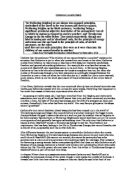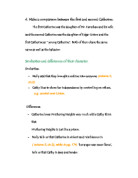Catherine II married a child in an adult body, and was very unhappy with her marriage. Prior to the wedding, Peter caught the measles. He was left with pock marks and little hair. He drank incessantly and his behavior was crude.
The marriage was miserable for Catherine. Her role was to produce a male heir, and it is very likely that Peter was sterile from his illnesses. It was discovered that all Peter did during the marriage in bed with Catherine during the night was play with wooden solders and miniature cannons and toy fortresses. Peter would make little cannon-firing noises with his mouth and shout out orders to the armies on the bed. He begged Catherine to play army with him, but she refused. He would always hide the toys under the sheets whenever any of the members of the court happened to check on the odd noises coming from behind the chamber door. The Great Duke, Peter, took his toy soldiering very seriously.
Later in the marriage, Peter executed a large rat in the bedroom for eating two of his starch-constructed soldiers. Peter claimed that the rat was clearly guilty according to military law. He was 25 years old at the time.
Catherine II was an unpredictable woman, who frequently changed her position on important issues. Some examples of this are the fact that Catherine II considered all people to be born equal, but later changed her mind. She considered freeing the serfs, but a peasant revolt changed her mind. She also overthrew her husband to become the ruler.
Catherine II was a player. It is widely assumed that Catherine II had twelve significant lovers after her marriage in 1745, including: Serge Saltuikov (1752), a young chamberlain at the court of the grand duke and duchess, Stanislav Poniatowski (1755), a charming and cultured young man, a member of Poland’s grand families. Her third lover was Gregory Orlov (1760), a hero in the battle of Zorndorf. Next was Alexandar Vasilchikov (1773), a 28 year old officer who was considerably younger than Catherine. Gregory Potemkin (1774), was her next lover, known to be cocky, but had a brilliant mind. Then came Peter Zavadovsky (1776), a very short relationship that lasted only four months. The seventh lover was Simon Zorich, (1777) a very handsome major in the Hussars. Next came Ivon Rimsky-Korsakov (1778), a talented musician. Number nine was Alexander Lanskoy (1779), the youngest of Catherine’s lovers. Next was Alexander Ermolov (1785), who was 30 years old, very tall, and blonde. Number eleven was Alexander Dmitriev-Mamonov (1786), who had a good education and spoke fluent French and Italian. Last was Plato Zubov (1789), a young guard’s officer that took very good care of Catherine.
Catherine educated herself by reading world history books. She changed a convent in St. Petersburg into a boarding school for girls called the Smolny Institute. In 1763, she founded the first college of medicine. In 1786, she issued the statute for schools for all of Russia. Catherine passed a law that every district town was to establish a minor school with two teachers and every provincial town must have a major school with six teachers.
Throughout her rule, Catherine lived in fear of threats to the throne. She was greatly influenced by Western thinkers. She studied their works and corresponded with several of them. She considered all people to be born equal, but later changed her mind. She thought about freeing serfs, but a peasant revolt changed her mind.
Catherine made her mark in Russian history with a very successful policy of expansion and continuing the process of Westernization that was begun by Peter the Great. Catherine released nobles from military government services, allowed nobles to treat their serfs as they pleased. Nobles were encouraged to divide and manage their estates. Merchants and townspeople were given more freedom by Catherine. She supported trade, education, the arts, and sciences. A serf rebellion in 1773 led to harsher treatment of the serfs and Catherine changed her mind about freeing them.
Russian society and culture became more stable under Catherine. The Russian majority became a European power. Catherine was the last of the absolute monarchs. Peter the Great had built military hospitals, but Catherine founded hospitals for civilians. When Catherine reorganized the provinces in 1775, she decreed that each provincial capital must have a hospital, and each county with a population of 20,000 to 30,000 should have a doctor, surgeon, assistant surgeon, and a student doctor. Catherine’s efforts caused the gentry to follow her example. Baron Von Kleichen founded a 300-bed hospital in St. Petersburg. In the 1790’s, the college added about 250 more beds to the hospital.
Catherine’s foreign policy included two wars with the Ottoman Turks and gained Russian control of the North shore of the Black Sea. The partition of Poland gained Russia a lot of land in the west.
After a long thirty-four years of ruling Russia, Catherine II died at age 67 in 1796. She suffered a stroke in her water closet (bathroom). She was discovered by her maid, lying on the carpet, next to her commode. She was a major influence on Russia and is a very powerful woman that is remembered and studied today.
Bibliography
Alexander, John. Catherine the Great: Life and Legend. Oxford: Oxford University Press, 1989.
“Catherine the Great,” Microsoft Encarta Online Encyclopedia 2000, , ©1997-2000 Microsoft Corporation.
Dixon, Ursula Grosser, “The Reign of Catherine II”, http://www.historyhouse.com/in_history/catherine_one/
Freeze, Gregory. Russia: A History. Oxford: Oxford University Press, 1997.
Gribble, Francis. The Comedy of Catherine the Great. E.P. Dutton & Company, 1942.
Ms. Wheeles, Class Lecture, Baylake Pines School, November, 2001.
Portraits of Catherine II and Peter III
Peter III







